TRAVEL
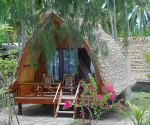 Accomodation (24)
Accomodation (24) Family Holidays (7)
Family Holidays (7)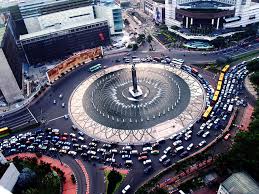 Jakarta (14)
Jakarta (14)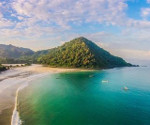 Lombok (1)
Lombok (1) Restaurants (7)
Restaurants (7)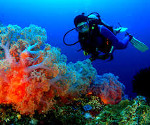 Things to do (17)
Things to do (17)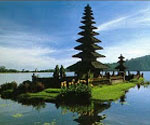 Things to see (10)
Things to see (10) Weekend Getaways (34)
Weekend Getaways (34)
Runner-up in 2015 Family Guide to Jakarta Top Hotels
Breathtaking cliff-top location above Jimbaran offering stylish, relaxing service and accomodation.
.
Bandung is the capital of West Java province, also nicknamed Paris van Java due to its beautiful natural landscape and the similar atmosphere it shared with European cities with colonial and art-deco architectures. Surrounded by volcanic mountains, this city used to be filled with tea plantations established by the Dutch. Elevated at 768m above the sea level, Bandung has relatively cool tropical weather. It has since evolved into a sprawling city filled with restaurants, cafes, outlet factories as well as universities. On the weekend, Bandung becomes a shopping destination with fashion outlets clustered along Jalan Setiabudi and Jalan Riau in the Dago district.
Tangkuban Perahu is an active volcano that technically last erupted in 1983; but the locals here regard the last eruption as being in 1969.The cool part is how you can walk around the perimeter of the volcano and visit the craters. The main one is called “Kawah Ratu” or Queen’s Crater..
Formerly part of West Java Province, Banten, located about an hour from Jakarta, became a separate province in 2000. This city has a lot of treasure to whom that likes history, such as the ruins of Surosowan Palace, Kaibon Palace, Masjid Agung Banten (Banten Great Mosque, enlisted in Moslem’s pilgrimage in Indonesia), Speelwijk Fortress, Chinese Temple Avalokiteshvara, and Karang Hantu Harbor (Devil Rock’s Harbor). This harbor has existed since centuries ago where Sultan Banten’s troopers took fight against the pirates and defensed from the Dutch.
The infamous volcano, Gunung Krakatau (Krakatoa), is located in this province. After the giant eruption in 1883, Krakatoa has a new volcano called “Anak Rakata”. Both of them can be reached from Anyer and Carita, small cities famous with their beautiful beaches. There are 3 beaches situated along the coastal zone of Anyer, i.e. Pantai Anyer, Pantai Karangbolong, and Pantai Carita. Every beach has their own unique but all of them are the perfect places for waiting sunset. There is an old light house made by the Dutch in 1885. Read more about the history of the road of Anyer which called de Postweg Anyer – Panarukan.
Ujung Kulon National Park is situated about 6 hours ride from Labuan (intersection Carita/Anyer – Labuan). You can find rice paddy field, rain forest, beach, and isles of Peucang, Panaikan, Handeuleum, and Honje. If you are lucky, you may as well encounter several animals native of Ujung Kulon, i.e. badak bercula satu/rhino (Primucerus sundaicus), as well as banteng (Bos Javanicus), rusa (Cervus timurensis), muncak (Muntiacus muncak), and kancil (Ragulus Javanicus).
.
Bogor is a city in the West Java province located about 60km from Jakarta. It is the 6th largest city of Jabodetabek (the Jakarta metropolitan region consisting of Jakarta, Bogor, Depol, Tangerang, and Bekasi) and the 14th nationwide, with a population having passed 1 million. With several hundred thousand people living on an area of about 20 km2, the central part of Bogor is one of the world’s most densely populated areas. Bogor is now an important economic, scientific, cultural and tourist center, as well as a mountain resort. The city has a presidential palace and a botanical garden (Kebun Raya Bogor) – one of the oldest and largest in the world. It bears the nickname “the Rain City” (Kota Hujan), because of frequent rain showers. It nearly always rains even during the dry season.
In the Middle Ages, the city was the capital of Sunda Kingdom (Kerajaan Sunda) and was called Pakuan Pajajaran. During the Dutch colonial era, it was named Buitenzorg (meaning “Without a care” in Dutch) and served as the summer residence of the Governor-General of Dutch East Indies.
The Batutulis, located about 2.5km south of the botanical garden, is an inscribed stone dedicated to Sri Baduga Maharaja (1482–1521), a Pajajaran king credited with great mystical power. The stone is housed in a small shrine visited by pilgrims – remove your shoes and pay a small donation before entering. It’s opposite the former home of Seokarno, Indonesian first president and one of the founding fathers. His request to be buried here was ignored by his successor, President Soeharto, who wanted the former president’s grave as far away from the capital as possible.
Presidential Palace (Istana Bogor), in the northwest corners of the Botanical Gardens. Originally the summer residence of the Governor-General of Java, now one of the Indonesian president’s summer escapes and noted for the 250 tame deer grazing in its grounds. The palace grounds can be visited from within the Gardens, but tours in the palace require 5 days advance notification — however, the Bogor TIC (see Contact) may be able to squeeze you in at short notice if there’s a tour going on.
The extensive Botanical Gardens were founded in 1811 as a private garden of the Governor-General’s summer residence by Sir Stamford Raffles, who also went on to found Singapore. However, it was Casper Reinwardt who adopted the gardens for more scientific use, with Johannes Elias Teysmann continuing in his footsteps. If you’re lucky, you may be able to spot a blooming giant arum (Amorphophallus titanum), the world’s tallest inflorescence (flower cluster) which can reach an astounding 2.5m and smells like rotting meat (known as Bunga Bangkai)..
The garden is located in the city center and adjoin the presidential palace compound of Istana Bogor. It is currently operated by Indonesian Institute of Sciences (Lembaga Ilmu Pengetahuan Indonesia or LIPI). It covers an area of 87 hectares which contains about 13,983 different kinds of trees and plants of various origin. The geographic position of Bogor means it rains almost daily, even in dry season. This makes the garden an advantageous location for tropical plants cultivation.
Founded in 1817 by the order of the government of Dutch East Indies (the oldest botanical garden in SEAsia), the garden thrived under the leadership of many renowned botanist. Since its foundation, Bogor Botanical garden has served as a major research center for agriculture and horticulture, a legacy that lived on until today.
Go early in the morning when it is still relatively cool. Take a drive around and find a quiet, shady spot to have a picnic and play ball games. There are many interesting plants here and a picturesque lake. The restaurant is located on the hill overlooking the park and fountain.
Entrance fee: IDR 14,000 (domestic) and IDR 30,000 (international) per adult.
This 125-hectares botanical garden is located approximately 1,300-1,425 meters on the slopes of Mount Gede Pangrango. It was founded in 1862 by the Dutch botanist Johannes Elias Teijsmann as an extension of the Bogor Botanical Gardens. The botanical garden at Cibodas, en route to Bandung from Puncak is beautifully laid out over a large area offering a serene and tranquil getaway from the humdrum of routine. Good well laid roads make driving around a breeze while one can stop anywhere and picnic,walk around or just soak in the tranquility of the park.
Off the beaten track and not popular as a tourist destination the garden is clean, attractive and refreshingly rejuvenate. The garden is the first place that Cinchona trees were grown in Indonesia for Quinine (anti-malaria) production. You will find an outstanding collection of ferns, palms, 65 pieces of eucalypti, Mexican mountain pines, and glasshouses bursting with cacti and succulents. There is a road loops around the gardens, passing via the Japanese garden with its cherry trees, and also paths leading to Cibeureum waterfall (about 2 hour round trip through rich tropical rain forest). The path continues to the summit. A good guide book titled “Cibodas to Cibeureum” usually available at the office. The book points out and explains aspects of the flora and fauna at various markers. There is a small entrance fee for each person and the car for the botanical gardens and a larger fee for the trek through the national park..
Runner-up in 2015 Family Guide to Jakarta Top Hotels
What you would expect from the Four Seasons – sheer luxury on a long sandy beach.
.
Puncak (Peak) has been known ever since Dutch colonial days as the mountain resort for Jakarta’s inhabitants to breathe in fresh mountain air over the weekend. Puncak is actually the peak of Mt.Gede-Pangrango, located in the Bogor-Cianjur-Sukabumi regencies, West Java Province, Indonesia. Located 7km before the summit, are the lush, tea-carpeted hills of Gunung Mas Estate .This tea plantation was built by Dutch Colonial Government and now is owned by PT.Perkebunan Nusantara VII, Gunung Mas. You can wander through the tea plantation, watch the pickers at work and later observe the process of drying and packing in the factory. End the visit by enjoying a cup of tea, looking at the green expanse of tea plantations and mountains with blue sky making the heart calm and forget every day routines for a moment .
.
The hotel is located on mountain area in Sukabumi, approximately 30 minutes from Jagorawi toll road or about 1.5 hour drive from Jakarta. The fresh mountain air and beautiful mountain and lake scenery is an additional value. This hotel is popular with families because of the range of the outdoor activities offered, e.g. forest walks, All Terrain Vehicles (ATV), fishing, mountain biking, tennis, swimming, 18 hole golf and driving range, children’s playground, flying fox, shooting target, etc. The rooms are standard and clean and the food is average in quality. The restaurant has a nice view over the lake..
If you ever wonder of “kampung” living, then this is the place where you can learn traditional arts and crafts. A guesthouse surrounded by river, rice fields, and tropical gardens. Prior reservation is required (there are minimum person requirement per package). You can explore (60-90 minute) kampung walk through rice paddy fields and bamboo forests while showing children the local flora and fauna. Learn how to play “angklung” (Indonesian traditional musical instrument made from bamboo). Classes can be arranged as can “taking a bath with water buffalo”! Traditional lunches and dinners are offered as part of a package, and use of the pool comes with no extra charge. A day package including kampung tour and leisurely lunch starts from IDR 125,000 (minimum 20 persons). Avoid visiting on public holidays as there is a very popular public swimming pool next door and the noise ruins the tranquil atmosphere..

